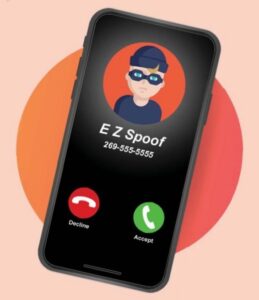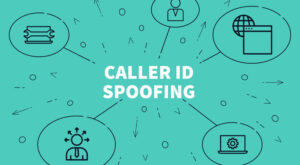
Caller ID Spoofing The Hidden Danger and How to Safeguard Against It
Understanding Caller ID Spoofing: Unmasking the Hidden Danger
Caller ID spoofing is a deceptive technique used by scammers to manipulate the information displayed on a recipient’s caller ID display. By altering the caller ID information, scammers can make it appear as if the call is coming from a different number, often a trusted source or a legitimate organization. This hidden danger poses a significant threat to individuals and businesses alike, as it allows scammers to deceive and manipulate unsuspecting victims.
The Rising Threat of Caller ID Spoofing: What You Need to Know
Caller ID spoofing has become increasingly prevalent in recent years, with scammers exploiting this technique to carry out various fraudulent activities. According to the Federal Trade Commission (FTC), there were over 1.7 million reports of imposter scams in 2019, resulting in a staggering loss of $667 million. Caller ID spoofing played a significant role in these scams, as scammers used it to impersonate government agencies, financial institutions, and even friends or family members.
How Caller ID Spoofing Works: Unveiling the Techniques Used by Scammers
Scammers employ various techniques to carry out caller ID spoofing. One common method is Voice over Internet Protocol (VoIP) technology, which allows scammers to make calls using the internet instead of traditional phone lines. By using VoIP, scammers can easily manipulate the caller ID information and make it appear as if the call is originating from a different number.
Another technique used by scammers is known as neighborhood spoofing. In this method, scammers use software to match the first six digits of their phone number with the recipient’s area code and prefix, making the call appear local and trustworthy. This tactic increases the likelihood of the recipient answering the call, as they are more likely to trust a local number. you can can check Scam reported Phone numbers on our website.
The Implications of Caller ID Spoofing: Uncovering the Potential Risks
Caller ID spoofing poses significant risks to individuals and organizations. Scammers can use this technique to carry out a wide range of fraudulent activities, including phishing scams, identity theft, and financial fraud. By impersonating trusted entities, scammers can deceive victims into providing sensitive information such as social security numbers, bank account details, or login credentials.
Moreover, caller ID spoofing can also be used to manipulate individuals emotionally. Scammers may impersonate friends or family members in distress, exploiting the victim’s trust and concern to extort money or personal information. This emotional manipulation can have severe consequences, both financially and emotionally, for the victims involved.

Caller ID Spoofing
Protecting Yourself from Caller ID Spoofing: Essential Safeguarding Measures
While it may be challenging to completely eliminate the risk of caller ID spoofing, there are several essential safeguarding measures individuals and organizations can take to protect themselves:
1. Be cautious with incoming calls: If you receive a call from an unknown number or a familiar number that seems suspicious, exercise caution. Avoid providing personal information or financial details over the phone unless you can verify the caller’s identity.
2. Verify the caller’s identity: If you receive a call from a trusted entity, such as a bank or government agency, independently verify their identity before providing any sensitive information. Call back using a verified phone number from their official website or documentation.
Recognizing the Signs of Caller ID Spoofing: Identifying Suspicious Calls
Recognizing the signs of caller ID spoofing can help individuals identify and avoid falling victim to scams. Some common signs include:
1. Calls from familiar numbers that you know are not associated with the caller.
2. Calls from numbers that appear to be local but are actually from a different area code or country.
3. Calls from government agencies or financial institutions demanding immediate action or threatening consequences.
The Role of Technology in Combating Caller ID Spoofing: Advancements and Limitations
Technology plays a crucial role in combating caller ID spoofing. Telecommunication companies and service providers are continuously working on implementing advanced security measures to detect and prevent spoofed calls. For example, some companies use algorithms to analyze call patterns and identify suspicious activity.
However, it is important to note that technology alone cannot completely eliminate the risk of caller ID spoofing. Scammers are constantly evolving their techniques, finding new ways to bypass security measures. Therefore, it is essential for individuals to remain vigilant and take proactive steps to protect themselves.
Legal Implications of Caller ID Spoofing: Understanding the Laws and Regulations
Caller ID spoofing is illegal in many jurisdictions, including the United States, under the Truth in Caller ID Act. This act prohibits individuals from knowingly transmitting misleading or inaccurate caller ID information with the intent to defraud, cause harm, or wrongfully obtain anything of value. Violators can face significant fines and even imprisonment.
Educating the Public: Raising Awareness about Caller ID Spoofing
Raising public awareness about caller ID spoofing is crucial in combating this hidden danger. Government agencies, consumer protection organizations, and telecommunication companies should work together to educate the public about the risks associated with caller ID spoofing and provide guidance on how to protect themselves.
Taking Action against Caller ID Spoofing: Steps to Safeguard Your Personal Information
To safeguard personal information and mitigate the risks of caller ID spoofing, individuals should take the following steps:
1. Register your number on the National Do Not Call Registry to reduce the number of unsolicited calls you receive.
2. Install a reputable caller ID app or service that can help identify and block suspicious calls.
3. Be cautious when sharing personal information over the phone and verify the caller’s identity before providing any sensitive details.
4. Report any instances of caller ID spoofing to the appropriate authorities, such as the FTC or your local law enforcement agency.
In conclusion, caller ID spoofing poses a hidden danger that can have severe consequences for individuals and organizations. By understanding how caller ID spoofing works, recognizing the signs, and taking proactive measures to protect personal information, individuals can safeguard themselves against this deceptive technique. Additionally, raising public awareness and implementing stricter regulations can help combat caller ID spoofing and reduce its impact on society.
Thanks for using our verify Scams platform.


